 |
|
| Even Before Birth: The Purifying World of Hindu Samskaras
|
| References & Further Reading: Joshi, K.L. Matsya Purana (Sanskrit Text with English Translation in Two Volumes): Delhi, 2007 Joshi, Laxmanshastri. Dharma Kosa, Samskara Kanda (Six Volumes): Wai, 1983. Khemka, Radheyshyam. Samskar Ank: Gorakhpur, 2006. Malviya, Dr. Sudhakar. Gobhila Grhyasutram: Varanasi, 1997. Mishra, Dr. Jagdishchandra. Paraskara Grhyasutram (With Two Sanskrit Commentaries): Varanasi, 2010. Mittal, Sushil and Gene Thursby. The Hindu World: New Delhi, 2004. Oldenberg, Hermann. Paraskara Grhyasutra (English Translation): Delhi, 2005 Pandey, Rajbali. Hindu Samskaras: Delhi, 2006. Rai, Gangasagar. Yajnavalkya Smrti with the Commentary Mitakshara: Delhi, 2007. Sharma. N.N. Asvalayana Grhya Sutram (With Sanskrit Commentary of Narayana): Delhi, 2010 Tachikawa, Musashi., Shoun Hino &Lalita Deodhar. Puja and Samskara: New Delhi, 2006 |
|
|
Understanding the Vedas: Methodology of Interpretation
The following are the reasons given generally for not being able to correctly understand the Vedas:
1). Sentences in the Vedas sometimes present an unclear meaning which creates doubts rather than resolve them.
2). Often they seem to contain absurdities which carry no meaning whatsoever.
3). There are mutually contradictory statements in the Vedas.
4). There is no use of studying the Vedas because they do not present anything new but repeat only that which is already well-known. 1). Unclear Meaning in the Vedas: Objection: There is a mantra in the Rig Veda which says:
‘During creation of the world, God was perhaps under, or perhaps above.’ (10.129.5)
What kind of doubtful message is this mantra propounding? Resolution: The mantra in question does not intend to create confusion or doubt. Rather, it wishes to point out the extremely subtle nature of the Creator of the World, the Supreme God, who cannot be known with any certainty by those who are devoid of a guru and a traditional knowledge of the scriptures. While this mantra speaks metaphorically, the very next mantra spells this out clearly: ‘Who can say where this world has come from? Who knows this clearly?’ (Rig Veda 10.129.6)
The answer is provided in various Upanishads:
‘It is far, and also near. Far for those who are ignorant, and exceedingly near for those know God to be their own Self.’ (Isha Upanishad 5)
2). The Objection of There Being Absurd Matter in the Vedas:
Objection: The Black Yajurveda (Taittriya Samhita) says:
‘O Grass protect him’ (1.2.1.1)
‘O Razor do not hurt him.’ (1.2.1.1)
‘O Stone which presses the Soma plant, listen to me.’ (1.3.13.1)
In all these mantras, various nonliving and insentient objects are addressed as if they possess consciousness to understand what we say. How can a tuft of grass, incapable of protecting its own self protect anybody? How can a sane person address a plant, or call out to a piece of stone to hear what he is saying? Is it not absurd to confuse insentient objects with sentient ones? Is it not misleading like saying that there are two moons?
Resolution: The Vedas emphasize that everything in this world has a sentient deity identifying itself with that particular object. This is an expression of immanence of divinity. It is these presiding deities (abhimani devata) of the individual objects which are addressed to using the names of the particular objects, and not the insentient (achetan) objects themselves. The same principle is emphasized in the Brahma Sutras, the supreme text of Indian Philosophy, which says:
‘The reference is to the presiding deities’ (abhimani vyapadeshah tu) (Brahma Sutras 2.1.5)
Commenting on the above sutra, Shri Shankaracharya explains:
‘There are passages in the Vedas in which inert elements are shown to indulge in action, for example, “the clay spoke” (Shatapatha Brahmana 6.1.3.2,4), or “the water saw” (Chandogya Upanishad 6.2.3,4). Wherever such passages occur, it is not to be assumed that the elements in question have sentience, rather, it is to be understood as a reference to their presiding deities (abhimani devata).’
3). Are There Contradictions in the Vedas?
Objection: There are obviously contradictory statements in the Vedas. At one place the Black Yajurveda (Taittriya Samhita) says:
‘There is only one Rudra, and not a second.’ (1.8.6.1)
At another place it is said:
‘There are thousands and thousands of Rudras on this earth.’ (4.5.11.1)
These two mantras, because of giving contradictory statements, cannot be said to comprise any authority, just like the following sentence uttered by a person “I am dumb by birth.” If he has never spoken in his life, how can the person do so now? The same way in which dumbness and speaking are mutually contradictory, so are the above two mantras contradictory to each other.
Resolution: The above mantras contain no contradiction. In the Brhadaranyaka Upanishad (3.9.1), the following conversation takes place between two sages:
“How many gods are there?”
“Three hundred and three”
“Good! Now tell me how many gods are truly there?”
“Thirty Three”
“Good! Tell me again how many gods are truly there?”
“Six”
“Tell me again how many gods are truly there”
“Three”
“I want to know the true number of gods”
“Two”
“Tell me again how many gods are there?”
“One and a half”
“Good! Now tell me the true number of gods”
“One”
In this revealing dialogue, the many number of gods are successively reduced to finally one God. This shows that it is the One God who assumes various forms.
4). The Vedas Present Nothing New:
Objection: There is a mantra in the Black Yajurveda saying:
‘May the waters wet you’ (1.2.1.1)
This mantra refers to the wetting of the hair of the Yajmana (performer of yagya), during the hair cutting ceremony in a Soma Yagya. This mantra merely repeats what is already obvious and known. It does not give any clue to something not already known to us. What kind of authority therefore can we attach to such mantras?
Resolution: Yes, even though the partial mantra quoted above does only repeat what is obvious, the full passage gives an additional information:
‘May the waters wet you, giving you long life and fame.’
Now, we do know that before cutting them, one has to wet one’s hair. However, what we do not know is that during the Soma Yagya, when one wets one hair, the presiding deity of water graces us with long life and fame. It is this unknown fact which the Vedas acquaint us with. The mentioning of the wetting of hair is relevant for setting the context. Actually, the Vedas are the only authority for disseminating this kind of knowledge which cannot be known by any other means.
Conclusion:
The Vedas reveal them in a graded manner. First, they create a doubt in our minds, which makes us think and ask questions. Searching for answers, we then take shelter at the feet of holy men who are not only well-versed in the traditional way of Vedic interpretation, but also living according to it. They then guide us on to the correct path of understanding and comprehending the Vedas in a manner which is comprehensive and all-inclusive. Such a method seeks to reconcile apparently conflicting statements, not discarding even a single Vedic sentence, nor preferring one section of the Vedas to the exclusion of others.
[This article is completely based on Sayana’s introduction to his commentary on the Rig Veda.]
|
|
References & Further Reading: Chaubey, Dr. Brij Bihari. Rk Sukta Mani Mala (Selected Suktas from the Rgveda Translated into Hindi): Hoshiarpur, 2010.
Gupta Som Raj. Upanisads with the Commentary of Sankaracarya, Five Volumes: Delhi Keith, Arthur Berriedale. The Veda of the Black Yajus School Entitled Taittriya Sanhita (Two Volumes): Delhi, 1967. Rgveda-Samhita with the Commentary of Sayanacarya (In Five Volumes): Pune 1983 Satwalekar, Pt. Sripad Damodar. Rigveda Translated into Hindi (The Finest Translation Ever of the Rig Veda): Gujarat, 1993
Taittiriya Samhita, With the Commentary of Sayana (Nine Volumes): Pune, 2000
| |||||||||||||||||
|


TABLA - FUENTES - FONTS
SOUV2
- SOUV2P.TTF - 57 KB
- SOUV2I.TTF - 59 KB
- SOUV2B.TTF - 56 KB
- SOUV2T.TTF - 56 KB
- bai_____.ttf - 46 KB
- babi____.ttf - 47 KB
- bab_____.ttf - 45 KB
- balaram_.ttf - 45 KB
- SCAGRG__.TTF - 73 KB
- SCAGI__.TTF - 71 KB
- SCAGB__.TTF - 68 KB
- inbenr11.ttf - 64 KB
- inbeno11.ttf - 12 KB
- inbeni11.ttf - 12 KB
- inbenb11.ttf - 66 KB
- indevr20.ttf - 53 KB
- Greek font: BibliaLS Normal
- Greek font: BibliaLS Bold
- Greek font: BibliaLS Bold Italic
- Greek font: BibliaLS Italic
- Hebrew font: Ezra SIL
- Hebrew font: Ezra SIL SR
Disculpen las Molestias

EXOTICINDIA.ES
| TEMAS |
HOME - PAGE - PAGINA DE ORIGEN | ||
| OTROS | -- |
Conceptos Hinduistas (1428)SC
Aa-Anc · Aga - Ahy · Ai - Akshay · Akshe - Amshum · Ana - Ancie · Ang - Asvayu · Ata - Az · Baa-Baz · Be-Bhak · Bhal-Bu · C · Daa-Daz · De · Dha-Dry · Du-Dy · E · F · Gaa-Gayu · Ge-Gy · Ha-He · Hi-Hy · I · J · K · Ka - Kam · Kan - Khatu · Ki - Ko · Kr - Ku · L · M · N · O · P · R · S · Saa-San · Sap-Shy · Si-Sy · Ta - Te · U · V · Ve-Vy · Y · Z
Conceptos Hinduistas (2919)SK
Aa-Ag · Ah-Am · Ana-Anc · And-Anu · Ap-Ar · As-Ax · Ay-Az · Baa-Baq · Bar-Baz · Be-Bhak · Bhal-Bhy · Bo-Bu · Bra · Brh-Bry · Bu-Bz · Caa-Caq · Car-Cay · Ce-Cha · Che-Chi · Cho-Chu · Ci-Cn · Co-Cy · Daa-Dan · Dar-Day · De · Dha-Dny · Do-Dy · Ea-Eo · Ep-Ez · Faa-Fy · Gaa-Gaq · Gar-Gaz · Ge-Gn · Go · Gra-Gy · Haa-Haq · Har-Haz · He-Hindk · Hindu-Histo · Ho-Hy · Ia-Iq · Ir-Is · It-Iy · Jaa-Jaq · Jar-Jay · Je-Jn · Jo-Jy · Kaa-Kaq · Kar-Kaz · Ke-Kh · Ko · Kr · Ku - Kz · Laa-Laq · Lar-Lay · Le-Ln · Lo-Ly · Maa-Mag · Mah · Mai-Maj · Mak-Maq · Mar-Maz · Mb-Mn · Mo-Mz · Naa-Naq · Nar-Naz · Nb-Nn · No-Nz · Oa-Oz · Paa-Paq · Par-Paz · Pe-Ph · Po-Py · Raa-Raq · Rar-Raz · Re-Rn · Ro-Ry · Saa-Sam · San-Sar · Sas-Sg · Sha-Shy · Sia-Sil · Sim-Sn · So - Sq · Sr - St · Su-Sz · Taa-Taq · Tar-Tay · Te-Tn · To-Ty · Ua-Uq · Ur-Us · Vaa-Vaq · Var-Vaz · Ve · Vi-Vn · Vo-Vy · Waa-Wi · Wo-Wy · Yaa-Yav · Ye-Yiy · Yo-Yu · Zaa-Zy







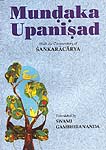


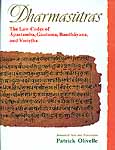
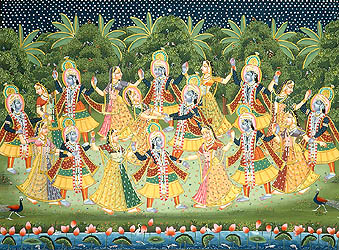
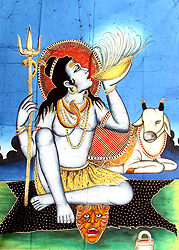

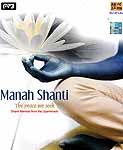

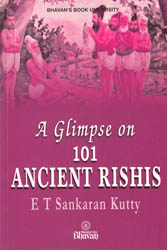




No hay comentarios:
Publicar un comentario